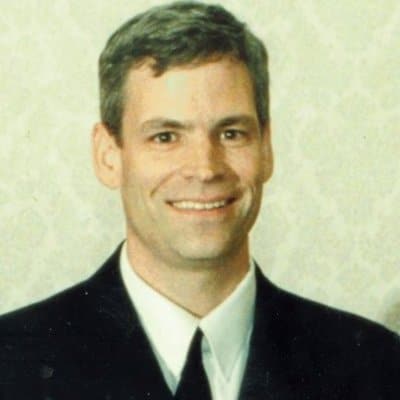by Barbara Weinstein
Downstream Consequences of Aging is a bi-monthly series written by guest columnist Barbara Weinstein, PhD. Today’s post gives readers a sense of the simultaneous breathless drama and grinding diligence experienced by all participating stakeholders at last week’s pivotal NAS meeting.
The Plenary: Sounds of Silence
At the Dec. 7, 2016 Dissemination Meeting: Hearing Health Care for Adults held at the National Academy of Sciences, Engineering and Medicine (NASEM), sounds of silence filled the room as Eric Mann of the FDA stood at the podium and announced the repeal, effective immediately, of the FDA regulation requiring that an adult over 18 years of age, seeking hearing aids, must first have a medical evaluation or sign a waiver of that evaluation.
Following lengthy deliberations and review of available evidence, the FDA concluded that the majority of prospective users (i.e. 60 -95%) do in fact sign a waiver, in lieu of the medical evaluation, and hence removal of this institutional barrier would be a small step toward improving access to and affordability of hearing health care without compromising patient safety and meaningful benefit to the consumer. Mann underscored that the Code of Federal Regulations (CFR) regarding conditions of sale stipulates that dispensers must continue to inform prospective users of the eight red flag medical conditions included by manufacturers in the instructional brochure as part of hearing aid packaging.
An ADA advocacy alert was issued the next day expressing support of the S.9 Over-The-Counter Hearing Aid Act of 2016, which seems to run counter to the thinking of some of the attendees at the NASEM meeting. Disagreement with yet another potential disruptive innovation could be sensed, with sentiments of representatives from selected professional organizations and agencies at odds with those seemingly shared by consumers and consumer technology organizations.
Breakout Sessions for Four Complex Issues
Following the public comments and review of the 12 recommendations proffered by the expert committee, four breakout sessions were convened where facilitated discussions took place surrounding four topic areas:
-
Public Education and Awareness
-
Quality Metrics and Health Professional Education
-
Innovation in Services-Access and Affordability
-
Innovation in Technologies
The complexity of the issues surrounding hearing health care delivery for adults and the need for a multipronged approach was evident throughout the day.
Clashing Currents and Crystal Clarity
It was crystal clear to me that the upstream currents must overtake the downstream momentum if audiology is to thrive and prosper as the professionals of choice to which adults with hearing loss turn. The consumer perspective is clearly critical to the sustainability of audiology as a profession.
As is evident from the following summary, the brainstorming sessions were productive with many recommendations actionable.
- As a profession we must innovate in terms of: (a) education of future professionals, (b) outreach for underserved populations, (c) research activities/methodologies and (d) inter-professional collaborations.
- As professionals we must revisit our protocols making sure to promote best practices specific to hearing aids/rehabilitation with an eye toward incorporating quality metrics which focus on functional outcomes which are consumer-centric (aka important to persons with hearing loss and health care professionals from whom we receive referrals).
- Value and quality must be the linchpin of all we do with professional adherence to an agreed upon set of metrics critical.
- User friendly digital platforms have great potential to assure that “what gets measured, gets made.” That was a mantra of the working group which I attended.
- Our messaging must change to one that is explicit about our deliverables and receptive to the consumer perspective. There is a need for a success descriptor to which all should aspire (e.g. the audiologic equivalent to 20-20 corrected vision).
- As practitioners we must begin to break from our silo mentality and implement the vital changes necessary to reach the many stakeholders challenged by untreated hearing loss. To this end,
- Our service delivery models must be innovative with more of our activities reaching deeper into the community.
- Tele-health services could transform the way we provide care extending our reach in terms of vulnerable and underserved populations.
- Interactive digital environments, online support groups and self-management tools are conducive to patient and clinician engagement.
- Remote programming of hearing aids would eliminate travel time, benefiting the bottom line, and promoting accessibility.
- Regarding affordability, unbundling and itemization of each aspect of care and use of audiology extenders were offered as alternatives to the status quo.
- As the go-to professionals for hearing loss, we must be at the forefront of efforts toward promoting effective provider-patient communication throughout the health care continuum.
- We must be vocal about the value added of audiologists being part of inter-professional teams.
- Collaborating on continuing education opportunities, interdisciplinary demonstration projects with audiology involvement are important avenues for us to pursue in the workplace.
Recurring Stakeholder Themes
Ecosystem disruption in the area of hearing assistance is essential to market penetration and adoption. Hearing aid compatible standards should be bidirectional. There was high decibel plea for quality systems and performance standards for OTC or direct to consumer hearing aids with attention to product labeling imperative.
Interoperability, portability, connectivity, and the import of an “open platform” for hearing aids were themes echoed throughout the day by many stakeholders, especially consumers and representatives from Hearing Loss Association of America (HLAA).
Next Steps Depend on Collaboration
In my view the dissemination meeting was productive. Stakeholders from a large variety of agencies and organizations worked collaboratively to identify needs, barriers and opportunities. There appeared to be a consensus on priorities and actionable next steps with individuals agreeing to build on discussions and priorities voiced during breakout sessions.
As an educator, clinician, and researcher, I am cautiously optimistic. I know that selected stakeholders do not share my vision nor that of U.S. Senator Elizabeth Warren who recently introduced the Over-the-Counter Hearing Aid Act of 2016. In a recent Facebook post attributed to Senator Warren with scores of “likes,” she declared that her bill “will help adults with hearing loss get access to hearing aids and make it easier for consumers to shop for the best value.”
I urge audiologists to think of these disruptions as opportunities we must embrace. The evidence regarding downstream consequences of untreated hearing loss is overwhelming. The future will be brighter for persons with untreated hearing loss if we remain part of the solution.
Barbara E. Weinstein, Ph.D. earned her doctorate from Columbia University, where she continued on as a faculty member and developed the Hearing Handicap Inventory with her mentor, Dr. Ira Ventry. Dr. Weinstein’s research interests range from screening, quantification of psychosocial effects of hearing loss, senile dementia, and patient reported outcomes assessment. Her passion is educating health professionals and the public about the trajectory of untreated age-related hearing loss and the importance of referral and management. The author of both editions of Geriatric Audiology, Dr. Weinstein has written numerous manuscripts and spoken worldwide on hearing loss in the elderly. Dr. Weinstein is the founding Executive Officer of Health Sciences Doctoral Programs at the Graduate Center, CUNY which included doctoral programs in public health, audiology, nursing sciences and physical therapy. She was the first Executive Officer the CUNY AuD program and is a Professor in the Doctor of Audiology program and the Ph.D. program in Speech, Language and Hearing Sciences at the Graduate Center, CUNY.
feature photo courtesy of shannon christy








